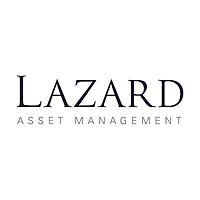Emerging Markets: On the cusp of a renaissance
Emerging markets, home to 80% of the world's population, are poised for growth with nearly 2 billion people expected to join their formal economies over the next decade. Unlike developed markets facing the challenge of aging populations, emerging markets generally benefit from a youthful demographic and lower dependency ratios.
Add to this globalisation—which has helped boost education, jobs, health, and wealth across these regions—and the outlook for economic and earnings growth looks promising. These positive developments support our belief that we are at the threshold of a resurgence in emerging markets investing—an opportunity too significant for investors to overlook.
5 Things We’re Watching
1. Non-synchronous growth
While economic and population growth are accelerating in emerging markets, they are generally decelerating in developed markets. This divergence creates unique opportunities for investors looking to mitigate risk and diversify their equity and fixed income allocations. Adding to this disparity, significant outflows from the asset class over the past five years have made the landscape especially fertile for active investors.
2. Fiscal policy advances
Improvements are evident in some emerging markets economies as many of their central banks have begun easing monetary policy in response to moderating inflation and external pressures. Central banks in Latin America and Eastern Europe, in particular, have been proactive, leading their developed markets counterparts in both raising policy rates during 2021–2022 and now in lowering them. Plus, the Federal Reserve’s easing cycle should create a more supportive environment for emerging markets assets through a moderation in US dollar strength. Historically, emerging markets have enjoyed some of their strongest years of outperformance following a peak in the US federal funds rate and strong risk-adjusted returns after global rate-cut cycles commence.
3. Shifts in supply chains
Efforts to deglobalize have created near-shoring or friend-shoring benefits for some emerging markets. As a result, there are prime opportunities for investors to capitalize on the early stages of a new wave of growth. For example, prospects in Latin America, namely Brazil and Mexico, have greatly improved on the back of nearshoring trends and an increase in foreign direct investment as companies adjust their global supply chain strategies. The impact, however, will depend on how effectively these markets can invest in human capital and participate in global production and supply chains.
4. Strong balance sheets
A capital spending surge between 2010 and 2016 has left emerging markets with excess production capacity, meaning that demand increases could lead directly to higher revenues. Recovering profitability (which is currently underway across a wide swath of markets and sectors), attractive free cash flow and dividend yields, and a widening economic growth premium are in emerging markets’ favour. This presents an opportunity for investors to enter these markets at a lower price, potentially leading to higher returns as the assets appreciate in value.
5. Attractive valuations and low investor positioning
In our view, emerging markets are one of the most mispriced and misallocated asset classes globally. The market is giving a significant discount relative to their positive underlying fundamentals and upside potential. Further, emerging markets remain under-owned by global investors. A reversion to a 20-year average allocation of 8.4% would represent inflows of $910 billion, or about 58% of current emerging markets assets under management.
Why Now?
While emerging markets have faced challenges since the global financial crisis in 2008—such as economic growth disparities, a strong US dollar, and geopolitical uncertainties—we see these headwinds as catalysts for transformation. Investing in these economies can offer substantial diversification benefits and attractive return opportunities, positioning them as a strategic choice for investors.
As long-time active investors in the asset class, we have honed our ability to identify companies with durable competitive advantages or the potential to claim them. The evolving global economic landscape makes now an opportune time to capitalize on the untapped potential of these economies.
We believe the stage is set for emerging markets to deliver robust growth and compelling returns, making them an essential component of a diversified investment portfolio.
Written by James Donald, Managing Director, Portfolio Manager/Analyst and Head of Emerging Markets.

1 fund mentioned

